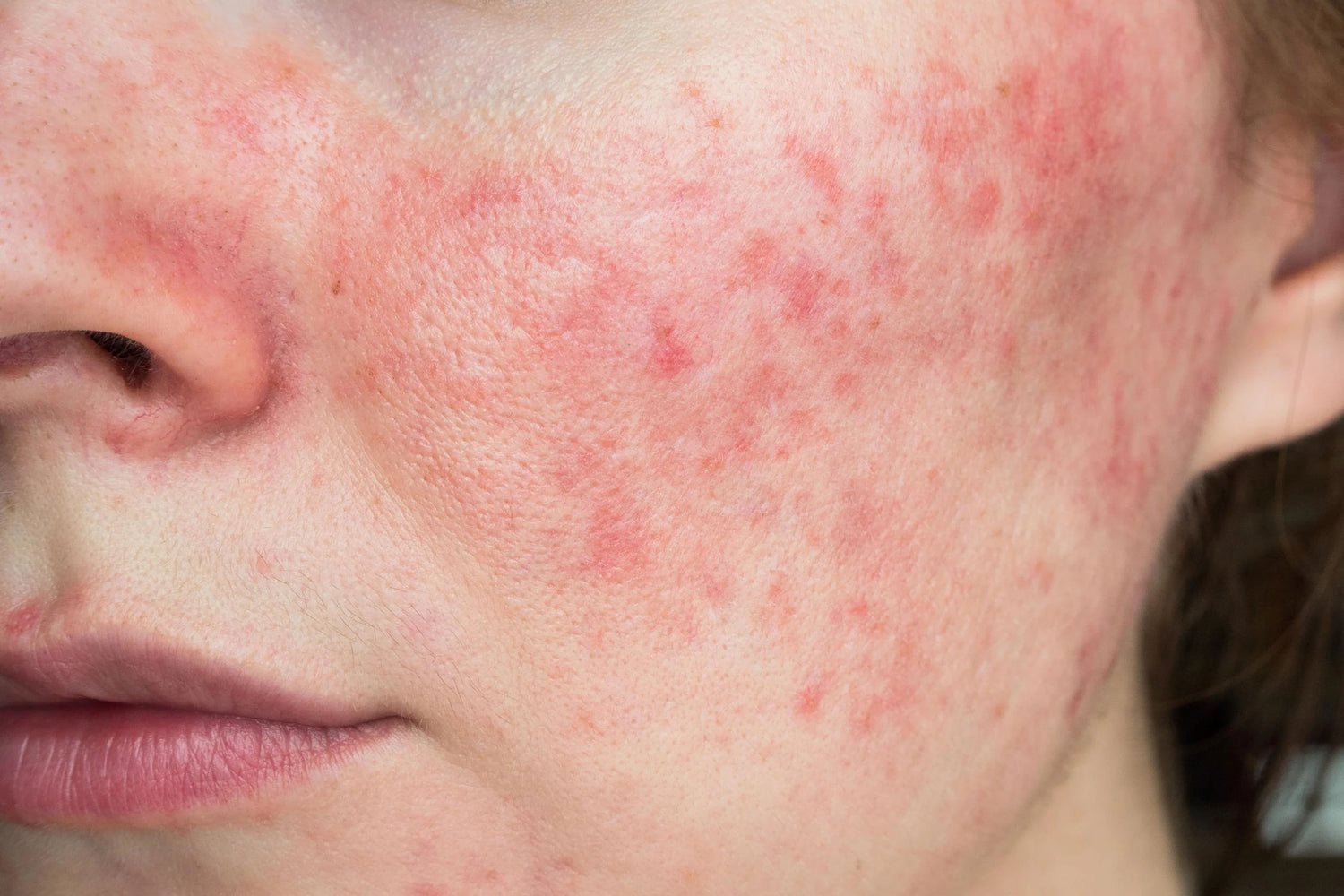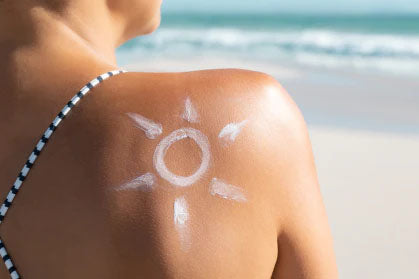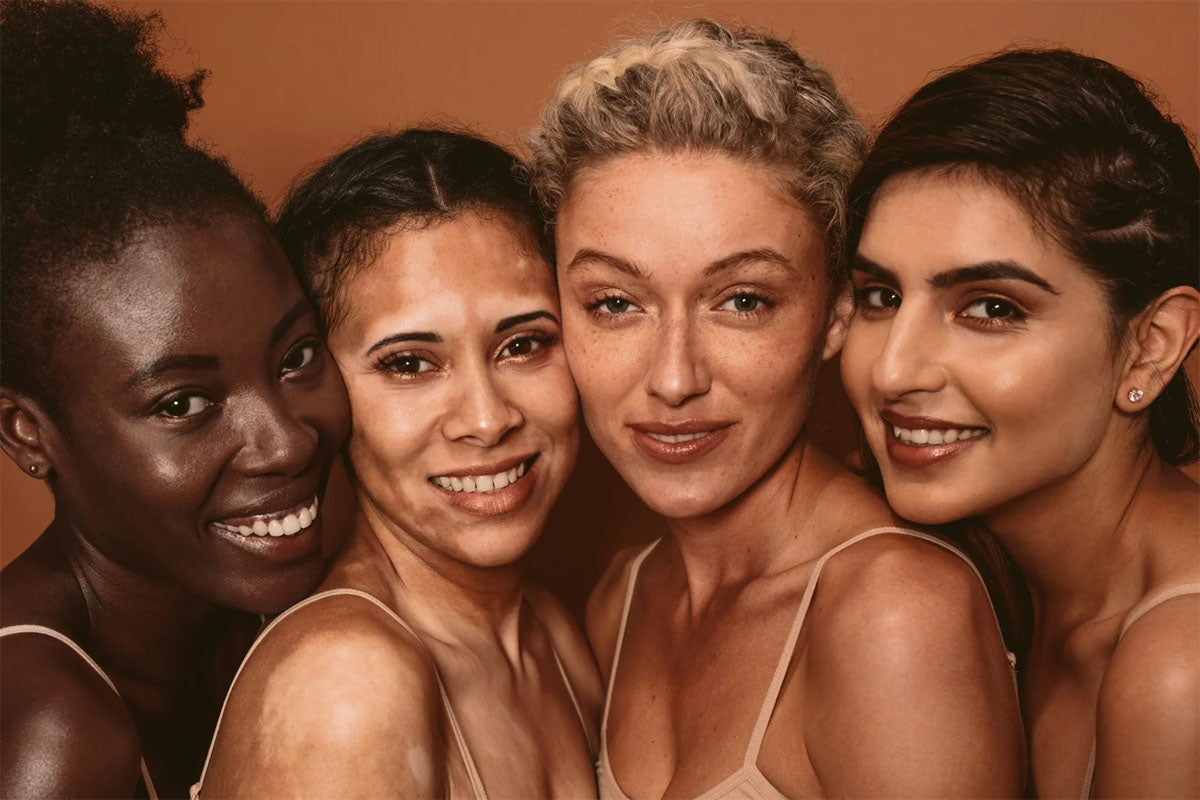April is Rosacea Awareness Month...
So it is the perfect time to write a feature on Rosacea care.
Rosacea is a skin condition that causes redness, flushing, blushing, turning red and inflammation of the skin.
The first signs are often very mild, starting with just a bit more flushing than normal of the central portion of the face. This could happen after going for a run, drinking wine, or when slightly embarrassing (yes, really!).
How does Rosacea look?
Rosacea is often, but not always, associated with tiny, visible broken blood vessels (telangectasia). For some patients those pus-filled spots can look like acne. These give Rosacea its medical name Acne Rosacea, as opposed to Acne Vulgaris, which we usually just call ‘acne’.
In its most severe form, Rosacea can lead to inflammation and thickening of the skin and changes to blood vessels. Sometimes this leads to characteristically swollen and deformed tissues in particular the nose.
Who does Rosacea effect?
Rosacea most often affects women aged 30-50, but for the men affected, it tends to be more severe.
Most commonly effected are white and fair skin types.
How Rosacea can affect you?
Even in its the mildest form, Rosacea can be a source of much emotional distress.
In recent studies published using data from the US National Reporting System, more than 90 percent of Rosacea patients said their condition had lowered their self-confidence and self-esteem, and 41 percent reported that it had caused them to avoid public contact or cancel social engagements.
Among Rosacea patients with severe symptoms, 88 percent said the disorder had adversely affected their professional interactions, and 51 percent said they had even missed work because of their condition.
How to treat Rosacea?
Whilst the exact cause of Rosacea remains unknown, there are several well-recognised associations:
- It is often hereditary
- It can associated with sun damage
- It can be related to autoimmune or inflammatory diseases
- Alcohol, smoking, caffeine, spicy food and exercise can make it worse.
- Stress is also a trigger in some people.
- People with Rosacea tend to have a higher than normal colonisation of a tiny mite living on the skin, called Demodex folliculorum

Treatments for Rosacea
Even though we don’t know the exact cause of Rosacea, there are many effective treatments available.
Let's think of these treatments in 3 main categories ;
1. Taking Oral Medicines
When we talk about oral medications for Rosacea, we are talking about antibiotics. We use these, not to treat infection, but because of their anti-inflammatory properties. The most effective antibiotics are Tetracyclines, in particular Doxycycline. We often use this as a low-dose therapy for around 6 -12 weeks.
Orally taken alpha and beta blockers are used to reduce flushing in patients. These can be particularly helpful for women who are also perimenopausal.
In some cases, taking bespoke supplements such as ProClear created to relieve Rosacea symptoms can be very effective. They focus on nourishing the skin and providing key micronutrients that can help to reduce redness, dryness and inflammation. Look for anti-inflammatory ingredients and clinically evidenced results.
2. Using Topical Creams
Prescription skincare
- Metronidazole (another antibiotic) gel or cream has been around a long time. It can be very useful in Rosacea but there are now some new kids on the block who pack more of a punch. Even so, this is most doctors’ go-to, first line treatment.
- Ivermectin cream (Soolantra) is often used to kill the mites mentioned earlier. It is particularly useful in more severe disease where there are pustules and spots.
- Another topical medication, effective in reducing redness and flushing is Azaleic acid. Previously it was available on prescription only but now it appears in some high-end skincare ranges. Start low eg at 5% once daily, and then work up slowly to a maximum of 20% twice daily preparation. It is best used regularly as part of a maintenance routine alongside the other treatments. Warning: it can dry out the skin.
- Brimonidine can be helpful for some patients but it can sometimes make things worse before they get better.
Cosmetic skincare
- It is important to focus on those ingredients that help to maintain and repair the barrier function of the skin since Rosacea compromises this barrier function. We usually always recommend moisturisers with Niacinamides and ceramides. Only use ceramides if there is increased redness from Niacinamide use.
- Topical retinoids can also be helpful in reducing some of the symptoms– but these need to started slowly and carefully, under careful medical supervision. We usually wouldn’t recommend buying these off-the-shelf or starting them without consulting a doctor.
- As for anyone, it is so important to stay out of the sun where possible, and use a high-factor SPF every single day. Some people with rosacea are particularly sensitive to chemical sunscreens and may do better with a physical barrier product.
- Maintaining hydration is also important so using a great Hyaluronic Acid Serum can help to maintain moisture effectively.

3. Clinic-Based Treatments
- Light and laser based treatments are available privately in the UK. Spend time finding a reputable cosmetic clinics where treatments are performed by a doctor or nurse.
- IPL or KTP laser can be helpful in reducing redness and broken veins. Studies by the American Board of Dermatology suggest that patients report 50-100% improvement in redness and broken vessels following laser therapy. There is still some difficulty interpreting these studies as there is no standardised protocol for each patient. Usually, patients require 1-3 treatments around a month apart.
- In more severe cases, surgical lasers are used to resurface the skin where skin thickening has occurred. These treatment can be used alongside radiofrequency and if necessary, excision of the excess tissue. Unfortunately, the thickened skin can recur after treatment and may require maintenance with topical products and repeat laser treatment. Laser can cause transient itch or discomfort and increased redness for around 1-2 weeks following treatment. After this time, improvements should start to become noticeable.

So that's Rosacea in a nutshell...
If you think you may be suffering from Rosacea, please do make an appointment with your GP or Dermatologist to chat through your options.
As you can see, there are loads of available treatments all of which can help your skin to feel better, look better and reduce any anxiety or embarrassment you may feel.

Dr Anna Porter is a GP, Menopause and Skin doctor. She works in the NHS and privately in London and Kent, UK. She is passionate about helping patients achieve great skin through treatments and by empowering them with knowledge and tools to help them achieve their skincare goals.
Take a look at ZENii's Rosacea range where you will find doctor formulated and clinically evidenced products to help alleviate the symptoms of Rosacea.



